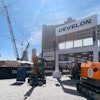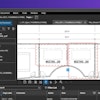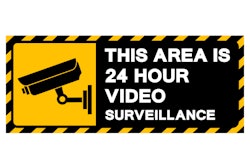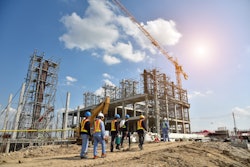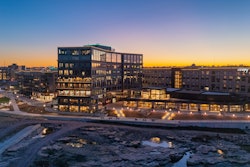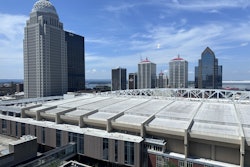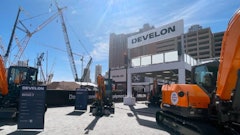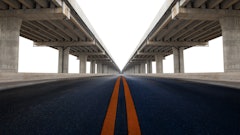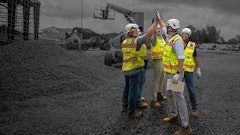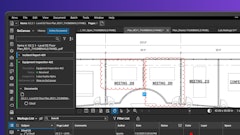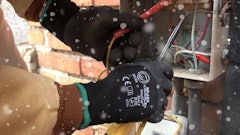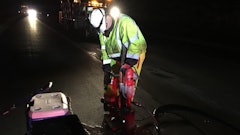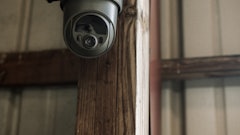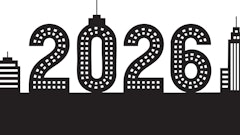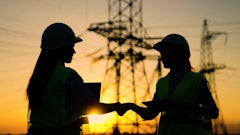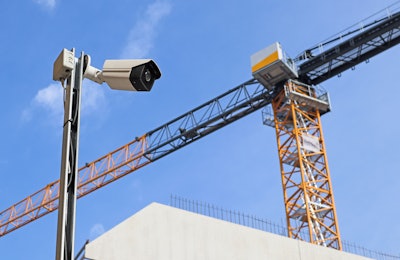
The first half of 2025 has been plagued by economic uncertainty – and that includes the construction industry. Construction spending has taken a dip of about 3.5% year-over-year. On top of that, tariffs on Canadian lumber, which comprises 85% of U.S. lumber imports, are at 14.5% and expected to increase to 34.5%. According to Oxford Economics, tariffs on construction materials such as steel, aluminum, and copper have an outsized effect on the construction industry, with an additional effective tariff of 10% when compared to the economy at large.
This economic volatility leaves many construction sites vulnerable to opportunity-driven thieves. Higher costs mean the materials and equipment already on construction and staging sites are now more valuable targets for thieves.
Theft, once a nuisance to construction, can now undermine a project’s future when equipment, parts, or materials are stolen, causing construction firms and contractors to spend additional money to replace supplies. In such circumstances, it’s all but assured that the project’s completion will be delayed, crunching budget flexibility and delivery dates. For the construction industry, preventing crime is now a part of the job.
A Ripple Effect Takes Shape
What used to be a $10,000 theft of copper wiring, equipment batteries, or steel- and aluminum-based materials could now cost even more with delays, tariff-related price hikes, and shipping slowdowns — all of which lays the burden on the construction company, impacting project deadlines, worker and sub-contractor schedules, supplier relationships and the project’s overall timing and profitability.
The financial and operational fallout of theft is much greater today than in the early months of 2025. In such an environment, the physical security of construction sites becomes a practice in risk management, from passive deterrence to proactive prevention. A 2019 study found that roughly one billion dollars in direct losses occurs on U.S. construction sites every year. And that number has likely increased in the years since.
Security can no longer be a passive thought or a reactive practice in an era where loss of equipment or parts can impact a project’s bottom line. Legacy surveillance tools and dated systems, such as fencing and unmonitored cameras, offer little in the way of preventing theft in real time.
Physical Security Vulnerabilities
When thinking of physical security at a construction site, many envision temporary fencing around the project’s perimeter. However, any victim of theft whose only line of defense was a chain-link barrier will tell you: that doesn’t always cut it.
With many nascent construction sites popping up on empty plots of land (horizontal sites), they often lack electricity or Wi-Fi. As such, many installed cameras do nothing to prevent a crime — they only capture it in action.
During the vertical stage of construction — when a building is ready to be built — power and road access are no longer an issue. At this point, it’s necessary to arm project areas with the necessary precautions. As a project continues in the vertical stage, crews begin work on plumbing, framing, and delivering appliances, meaning a higher density of valuable materials and equipment are on-site.
Thieves become empowered, and more motivated, in a climate where their potential to turn a profit has increased exponentially. With steel and aluminum tariffs at 50%, a target is now on equipment, materials and machine parts containing either or both metals. For that reason — and at this point in 2025 — proactive security is the only real way to mitigate the risk of theft.
Proactive vs. Reactive Security Strategies
Reactive security captures proof of the crime, but does little to protect construction-site inventory, equipment, etc. Proactive security, on the other hand, is preventative. Still, not all proactive security measures are created equal.
Fences, on-site guards, and cameras are all forms of proactive security that, alone, will not suffice or provide adequate protection. Fences alone can act as their own sort of deterrent, but for dedicated thieves, they only become an obstacle. Instead, it’s important to consider layering defenses, from fences to cameras to on-site or remote guards, to create a well-rounded form of security.
A truly proactive approach to construction security marries surveillance, deterrence, and response into a single, cohesive strategy. The goal is never to catch thieves after they act. It’s to stop them from acting at all.
Installing surveillance cameras with remote video monitoring (RVM) capabilities on a construction site is a baseline security measure these days, akin to the expected temporary fencing. Whether a DIY installation or a professionally set-up system, it’s never been easier to multiply eyes on a project with cameras available at every angle. But while cameras can document what’s happening, they do little to prevent crimes by seasoned thieves. Nowadays, RVM systems are largely reactive unless empowered with additional solutions.
With the power of AI strengthening security procedures and responses, RVM systems paired with AI can elevate your proactive security approach to deterrence and detection. AI doesn’t just watch. It interprets, predicts, and alerts in real time. On top of traditional video monitoring, AI has the power to distinguish between a worker entering during normal work hours and a trespasser hopping a fence on a construction site after hours. This relieves the burden of watching multiple security feeds in real-time, requiring immense manpower.
Proactive security measures come with clear, measurable benefits:
- Reduced risk of project delays, loss of inventory and materials
- Protects project investment
- Displays risk management to clients/investors/stakeholders
The Bottom Line
Knee-jerk market responses to volatile economic decisions have ripple effects on industries, supply chains, and inventory value. Protecting projects, materials, and equipment becomes an imperative for an industry charting its course through a news cycle embroiled in the latest tariffs, shipping bottlenecks and trade disputes.
Fortunately, construction professionals are not without options. In an age marked by innovation and the emergence of AI-enabled tools, construction sites can capitalize on multi-tiered physical security solutions to protect their projects before anything can happen.
When treating physical security as a proactive investment, companies aren’t just protecting materials, equipment, and the site itself. They’re protecting relationships, profitability, and the project’s success.

